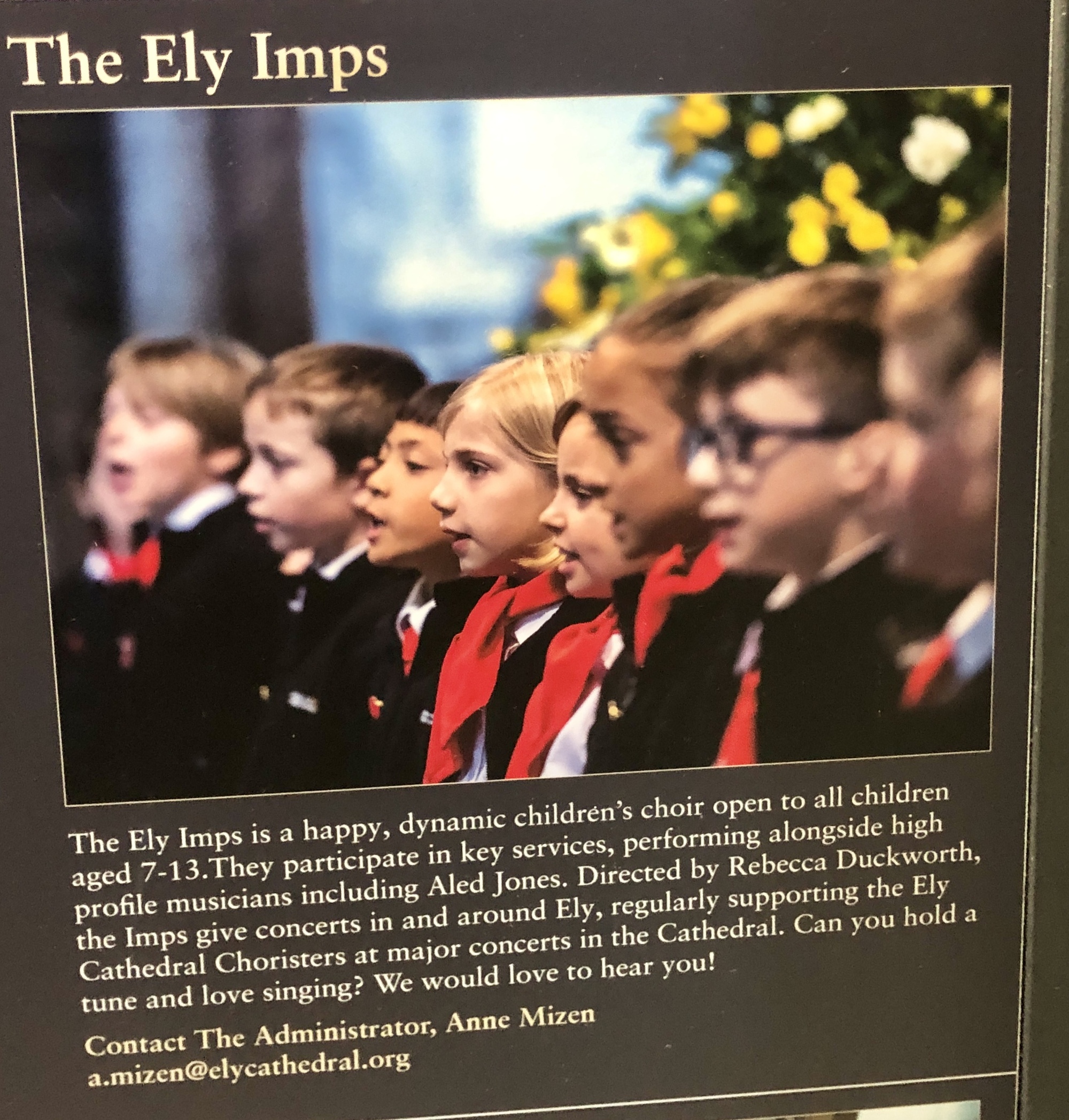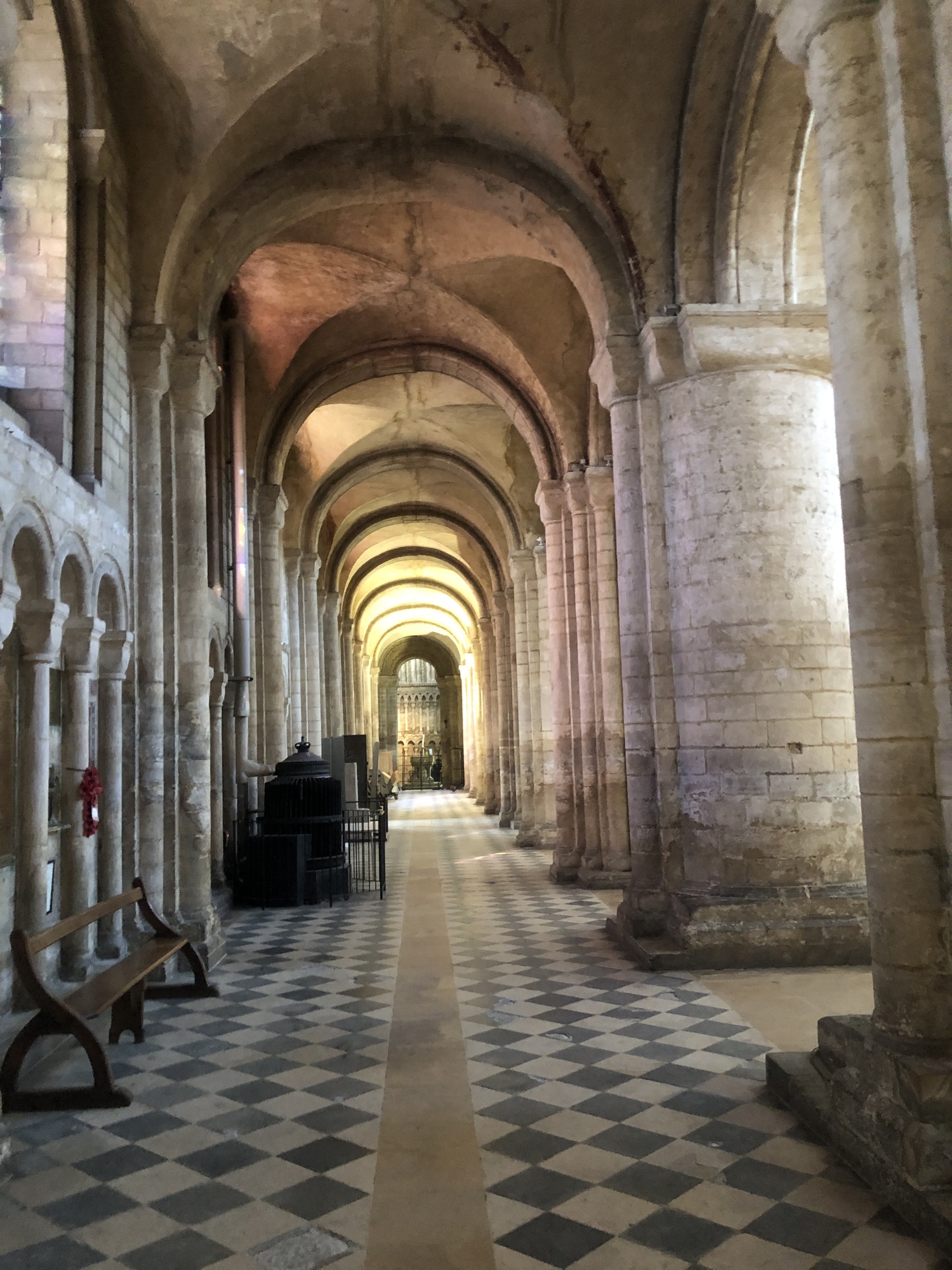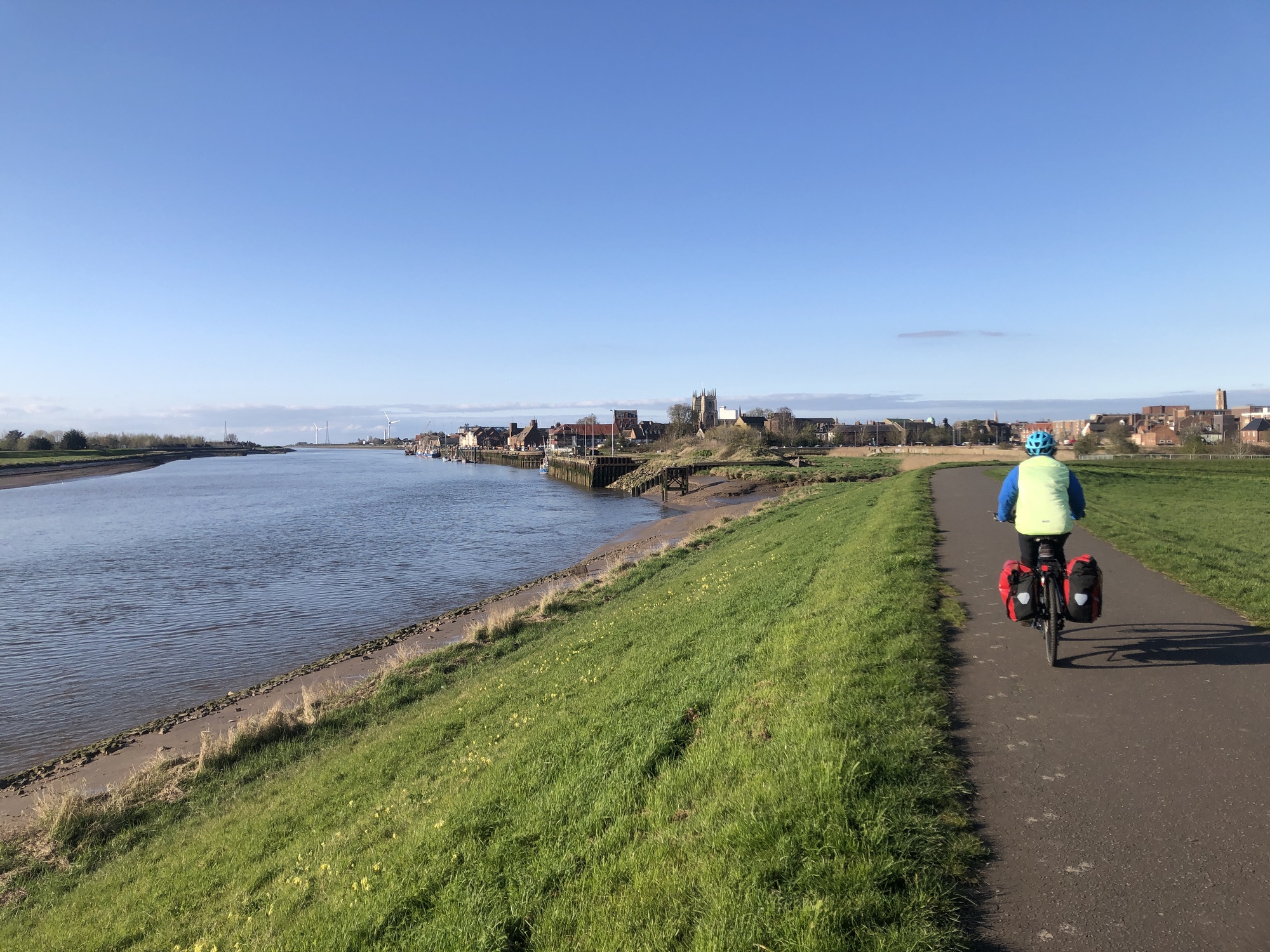April 7, 2023
Ely to Kings Lynn
Missed turns and floored by the flies.
It’s a sunny Spring Good Friday and Ely Cathedral is limbering up for their Good Friday ceremony with an host of functionaries scuttling about.
Our Airbnb host Yvonne tells us that visiting the cathedral is free today. She kindly lets us leave our bikes in the garage while we take the short walk to the cathedral.
The interior of the cathedral is massive in length and has beautifully painted ceilings of bright colours and interesting designs.
The lantern, with its octagonal stained glass sides 14 metres high across a 23metre span, was built of wood, in 14th century after the Norman tower collapsed. No tower visits today unfortunately.
https://www.elycathedral.org/about/history-heritage/the-octagon
Many of the stone figures have suffered with time, but once must have been intricate in their detail. As we leave, the woman attending the door, who had earlier advised me of the solemnity of the occasion gives us a friendly wave.

| Heart | 1 | Comment | 0 | Link |

| Heart | 1 | Comment | 0 | Link |

| Heart | 1 | Comment | 0 | Link |
Soon though, we have to farewell Ely and find the Sustrans route for Kings Lynn, by way of Downham Market. It all looks pretty straightforward and of course should be, though as always, we throw in a few wrong turns here and there to complicate matters.
The first part of the route out is past the college, through the streets of Ely, a town of mainly Victorian and Edwardian brick villas with a few bungalows sprinkled about. Oliver Cromwell’s family home is here too- the only one of his residences, apart from Hampton Court, to survive. How the mighty fall.

| Heart | 0 | Comment | 0 | Link |
Before long we’re out among the agriculture again, with heavy machinery in evidence, some belting towards us on the narrow roads from time to time. Sugar beet is apparently a main crop and the open soil is waiting to be sown with grain of some sort. Barley is exported to the Baltic countries for beer making. The soil looks rich, black and peaty.
Side roads are called ‘Droves’ and towards Pymoor we cycle along ‘The Straight Furlong’. In England this is an eighth of a mile, though it may have been different when the Saxons brought it from what is now Germany. East Anglia is the earliest part of Britain to be settled by the Saxons and the euphonic name of one of their leaders, Wuffingas, is fast becoming an earworm.
A 90 degree turn to New Bedford River brings us to 100 foot bank, a stretch of trail before 10 Mile Bank. This is bordered on one side by a high stop bank, with agricultural land on the other . The road is straight and long. Too straight and long really- it goes on forever but the bumpy surface keeps us focused.
Cycle touring teaches you to deal with whatever nature thrusts your way, but now it’s thrusting clouds of thousands of small gnat-like flies, hurtling towards us like so much hail. They don’t seem to bite, but plaster our jackets and helmets with black specs. Their intensity tails off briefly, only to be renewed with the next onslaught. Mouths jammed tightly shut, we plough on. Looking up is like staring into oncoming black tracer. Nothing lasts forever though and thankfully we reach an end point. These insects need research; we’ll investigate.
We stop for lunch in the shelter of a bus stop conveniently and timely placed. A few locals walk by with dogs and greet us. Their little dogs yap. Directions from a dedicated local, planting spring flowers underneath the Ten Mile sign, bring us through scrubby bushes and lines of houses to Denver, which in turn leads on to Downham Market where a Tescos revives is with a drink and crisps.
From here we follow the Sustrans signs until we lose them and go slightly off piste heading west, though our instincts are telling us go north, go north. Additionally, I have read that the electric power station on the northern horizon is the place to head for. Eventually a helpful woman puts us right, telling us with a joyful laugh that lots of cyclists do this. Someone please tell Sustrans.
We do eventually find the right direction and before too long are heading on a road between very green fields towards the aforementioned Power Station. And sure enough there’s a cycle path- sealed and speedy, along the River Great Ouse, one of several Ouses in the UK. From this approach the city looks particularly attractive, with the widening river as it heads to sea boarded by Red brick buildings and a tower or two.
Two streets back from the waterfront there is a very large square, similar to those of northern France, and it is here that we find The Duke’s Head. It’s a large fronted building of blue and white hues. We are particularly grateful to the young receptionist who rejects the allocated cycle storage room for something more secure.

| Heart | 3 | Comment | 0 | Link |
After an energetic day, an early night is called for. We also plan a look around in the morning since the distance to Hunstanton is not long and we also have the luxury of an 11:30 checkout.
Today's ride: 63 km (39 miles)
Total: 126 km (78 miles)
| Rate this entry's writing | Heart | 9 |
| Comment on this entry | Comment | 1 |
2 years ago


















